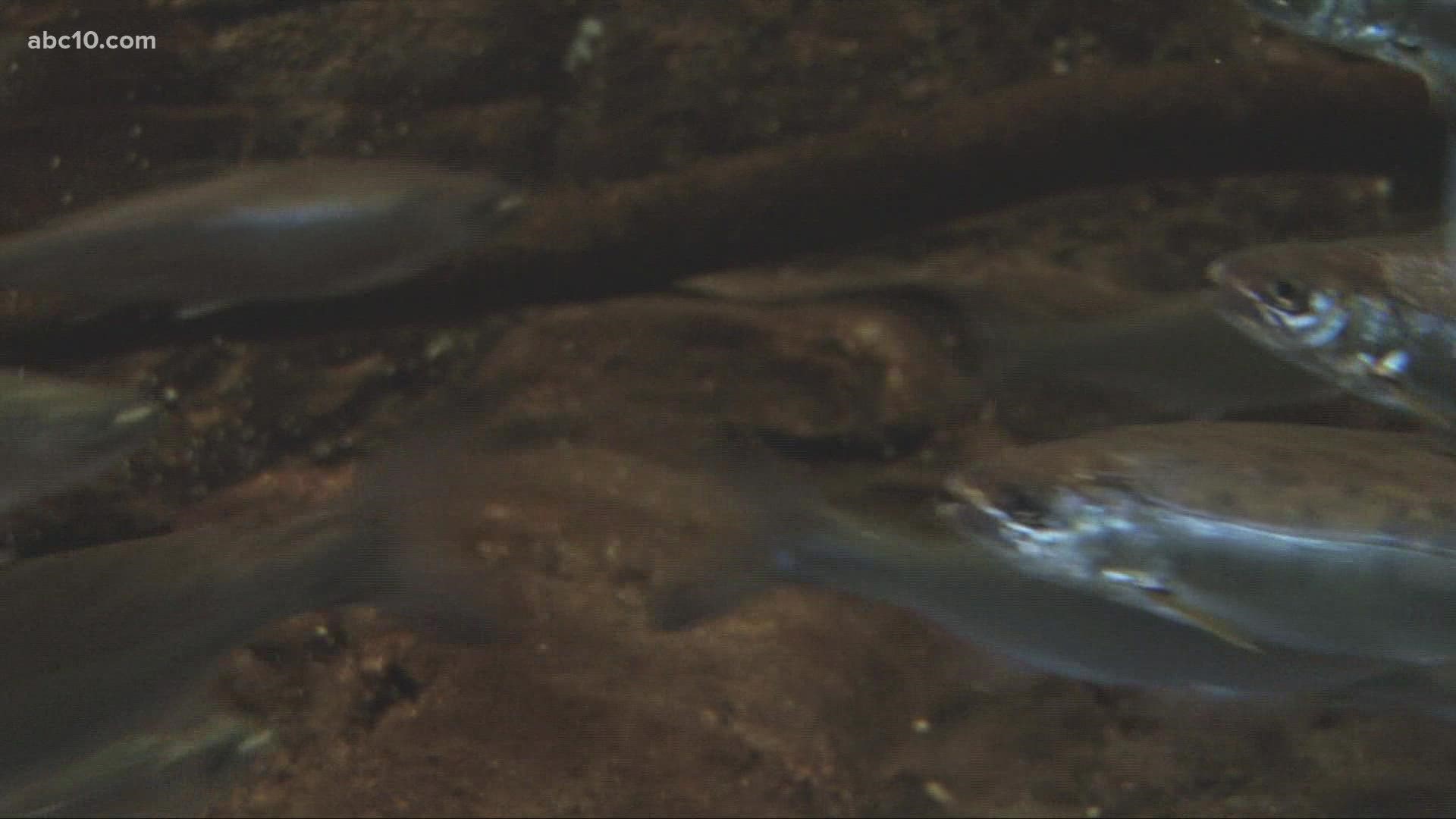SUTTER COUNTY, Calif. — Climate variability has caused issues across the state from many years of drought, fallowed land, and wildlife endangerment
However, a pilot program by UC Davis is aiming to improve conditions for rice farmers and salmon while these conditions persist.
Ove the past few years, UC Davis researchers with the Salmon Project released about 7,000 fish with trackers into rice fields on Steve Neader's rice farm in Sutter County. Researchers said they had the salmon eggs and tended to them every day, fed them and cared for them until they hatched on Nov. 20, 2021.
The project monitors baby salmon and allows them to take a detour from the river, feed off rice lands, and follow canals back into the Sacramento River from the Sutter Bypass.
"The area around the river is a natural floodplain and that's where the salmon used to move up the Valley," Neader said. "And we're just kind of trying to recreate that natural floodplain and give the salmon a place to grow."
The idea is to get salmon as big as possible as fast as possible. This allows them the chance to swim faster and become stronger in order to evade predators.
"In a field like this, there's lots and lots and lots of food, much more food per area of water than say in the river," UC Davis researcher Derrick Alcott said.
The California Rice Commission say results show salmon in rice fields have 4.5 times the survival rate than in rivers. Studies also show reactivating natural floodplains helps produce up to 149 times more food for salmon than in the rivers. Salmon are seeing growth rates around 5-12 times faster.
While many may be concerned the water over rice fields is a waste during drought years, the California Rice Commission says it's only about four inches of water over land. The ground is clay-like over rice fields and doesn't necessarily absorb the water. When the winter months end, this water, along with the salmon, run into canals. The canal water moves into rivers and eventually the ocean.
David Guy, President of the Northern California Water Association (NCWA), says there's really no safe haven for the fish to go in rivers.
"They're subject to predators, there's no food source, so they basically starve," Guy said.
The Salmon Project hopes to study the progress of salmon growth and their journey of survival into the ocean with tracking devices.
"They go out to the ocean and they come back and this is where we would want them to spawn," Neader said.
According to the California Rice Commission, 95% of the state's rice is grown in the Sacramento Valley.
"We think the trade off says that those spring diversions provide much more value for the environment and for the economy," Guy said.
ABC10: Watch, Download, Read
Watch more from ABC10
Tahoe South Events Center: Here's what you need to know



















